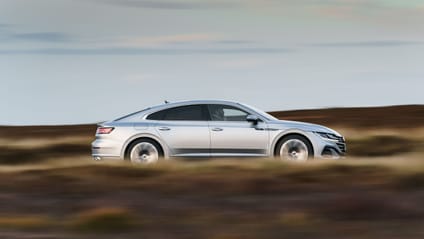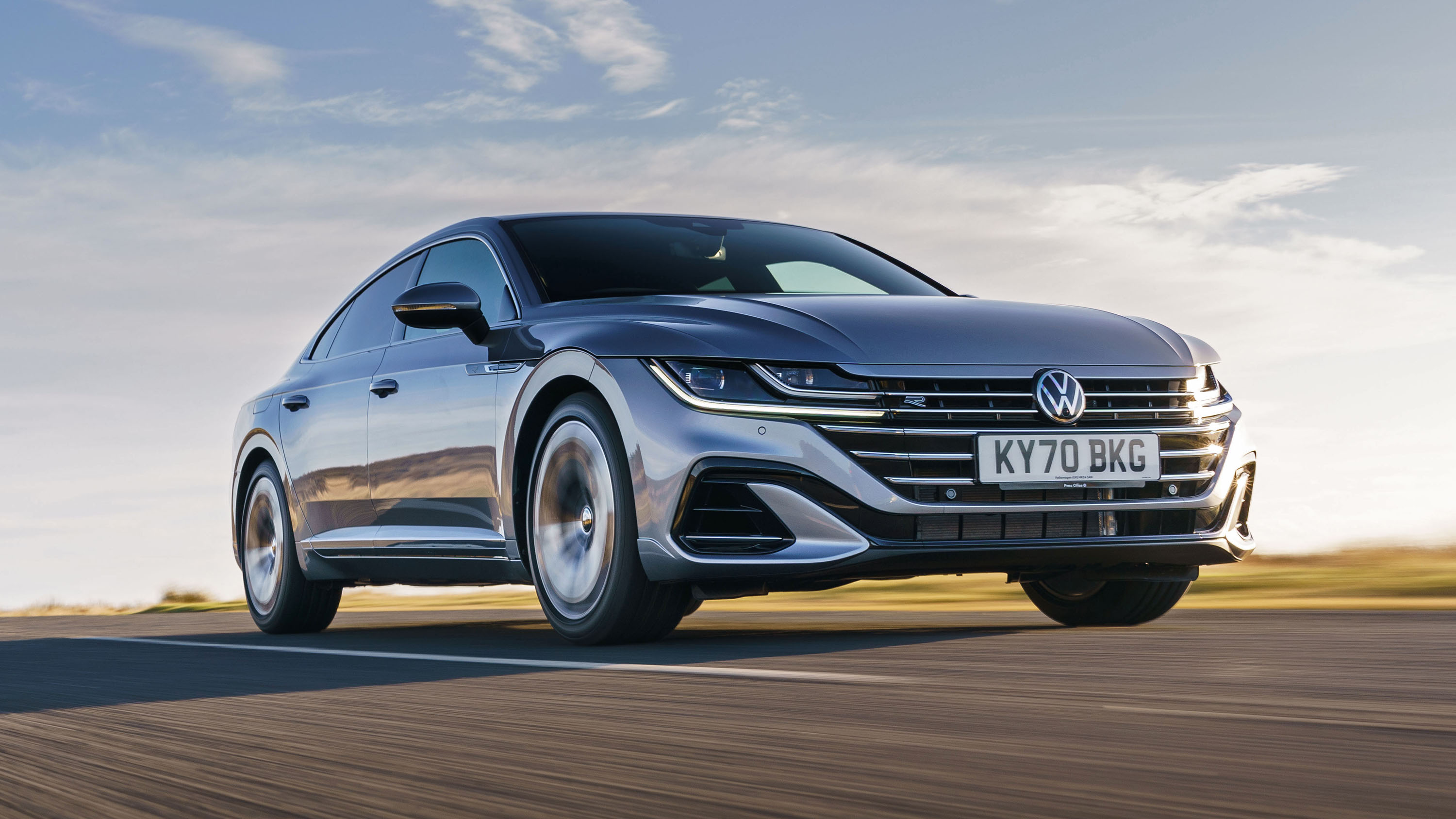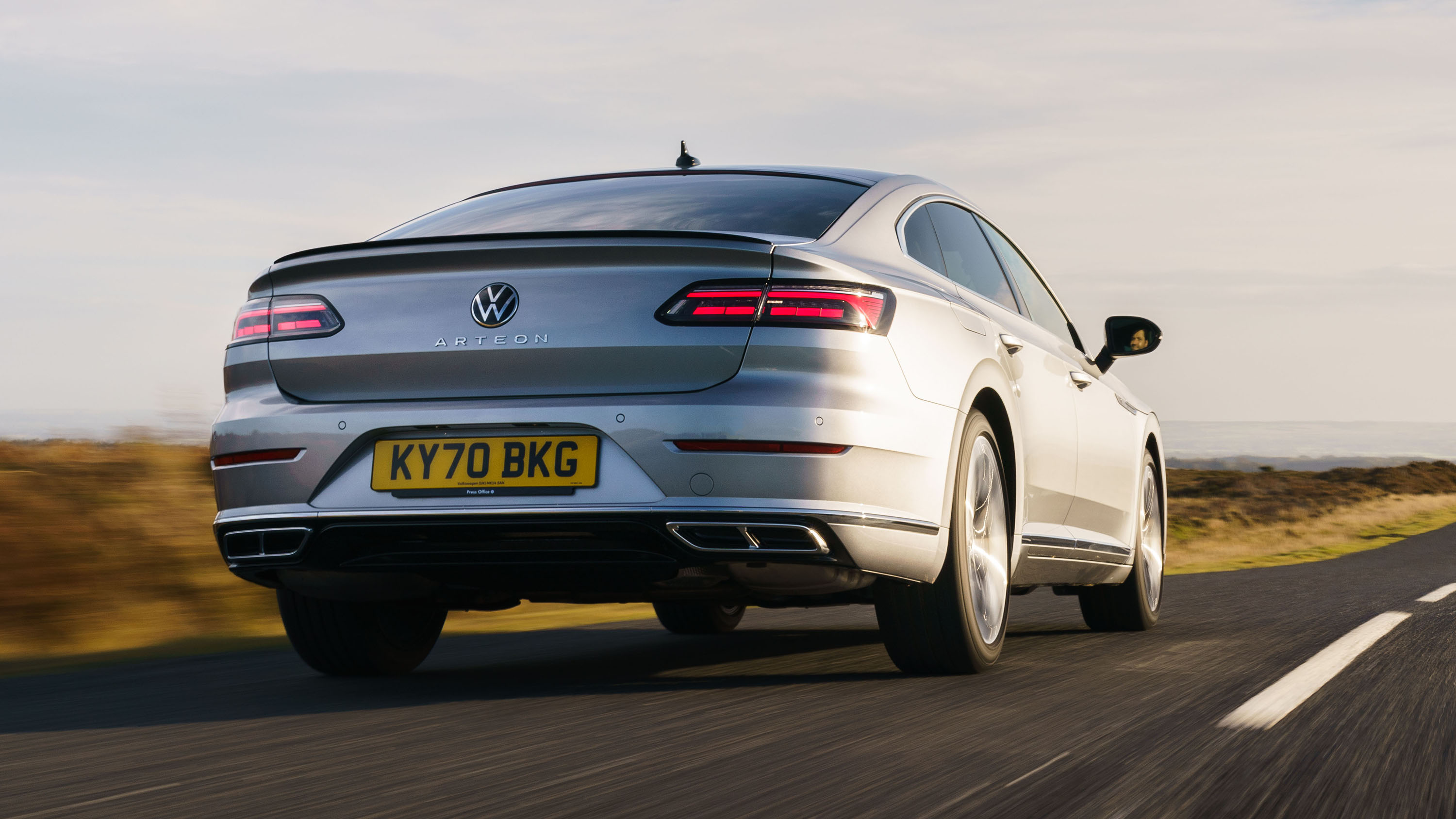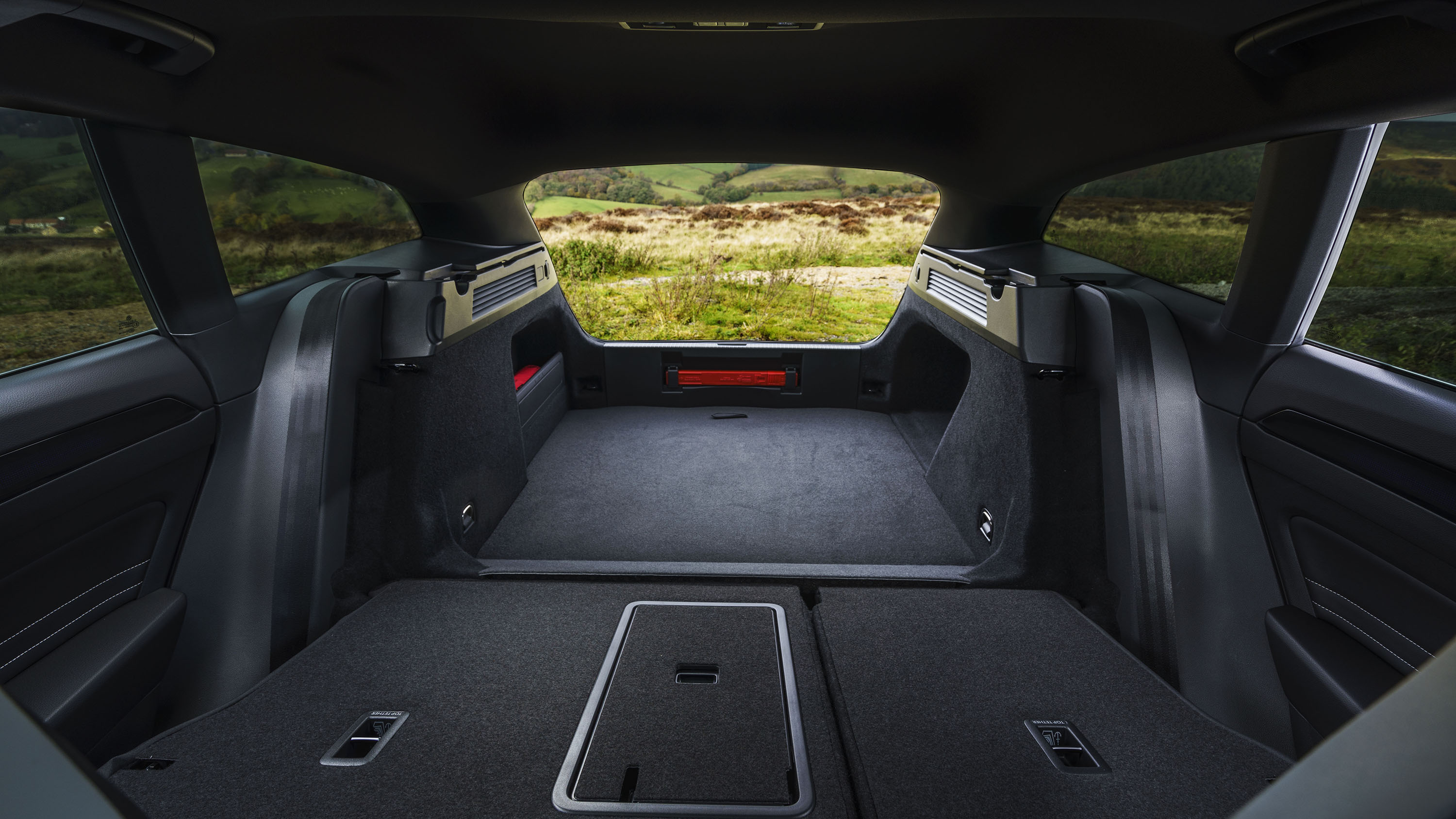
Volkswagen Arteon review
Good stuff
Bold styling, masses of space, relaxed gait
Bad stuff
Not as interesting to drive as it looks
Overview
What is it?
The Arteon is not, says Volkswagen, a replacement for the Passat CC, but instead a new contender that’s intended to elevate VW to new heights. VW describes the Arteon as an ‘avant-garde gran turismo’, to which we retort it’s a rakish hatchback, that’s big on looks and big inside. Those aspirations attached to it are pretty sizeable, too, because unlike the Passat CC, it’s aiming at some premium-badged rivals from Audi and BMW. Specifically cars like the A5 Sportback and 4 Series Gran Coupe.
Volkswagen reckons the Arteon’s got the measure of them, though, dimensionally. It’s a car not lacking in scale. That doesn’t just give it presence, but space, too.
It’ll turn heads: we’ve never seen anything from VW so obviously and extravagantly styled. It’s busy and interesting compared to the company’s more typically restrained norm, especially following its mid-life facelift, which has seen the addition of chintzier lights and a svelte Shooting Brake estate version. Not to mention a 316bhp Arteon R. The Arteon’s spruce-up has seen it emerge even more confident than upon its 2017 launch, with more options.
Prices start at a whisker over £30,000 – really not that much, given the sheer size of the thing – which buys a 1.5-litre petrol with a six-speed manual gearbox. Upgrading to a Shooting Brake is a mere £800 option.
On regular Arteons, you’ve a choice of four engines – 148bhp and 187bhp petrol turbos, and 148bhp and 197bhp turbodiesels. You can add a seven-speed DSG automatic and 4Motion all-wheel drive depending on spec (add them if you can afford to, we reckon), while that range-topping Arteon R gets both of those as standard. A plug-in eHybrid is just around the corner.
We suspect that’ll do well, too – the average power output of the Arteon range appears to have shifted downward over time, even accounting for the introduction of the R, suggesting people are taken with the way it looks, but want something a little more efficient sat behind that rakish grill/light combo.
It’s even reflected in the wheel choices. At launch, we were told the Arteon was designed to run on 20in wheels, to best fill the arches and match the rest of the design’s swagger. Post-facelift it launches on 17in alloys (named Cardiff, as per VW’s strategy of naming all its wheels after locations, invoking images of a particularly raucous night out) with 18s and 19s optional.
Our choice from the range

What's the verdict?
Taking the fight to Audi and BMW in a niche marketplace is an ambitious move from Volkswagen, even with a car as boldly styled and extensively equipped as the Arteon. To drive, it doesn’t stand out against its rivals – which is a problem on first acquaintance, though perhaps less so over time. But the greatest hurdle the Arteon faced at launch was its lack of an upmarket badge.
The fact VW has added a whole new body style as well as a performance R version suggests it’s a hurdle the Arteon’s cleared, though the introduction of a tiddly petrol engine with a price tag close to £30k also suggests ‘value’ is a selling point over ‘image’.
Either way, this is a car that shines best with modest expectations of what it’ll deliver. Go in expecting a proper Gran Coupe rival and you’ll be left disheartened. Think of it as a Passat-turned-fashion-influencer and you’ll be far more taken with the Arteon.
The Rivals
Trending this week
- Car Review
BMW iX3










